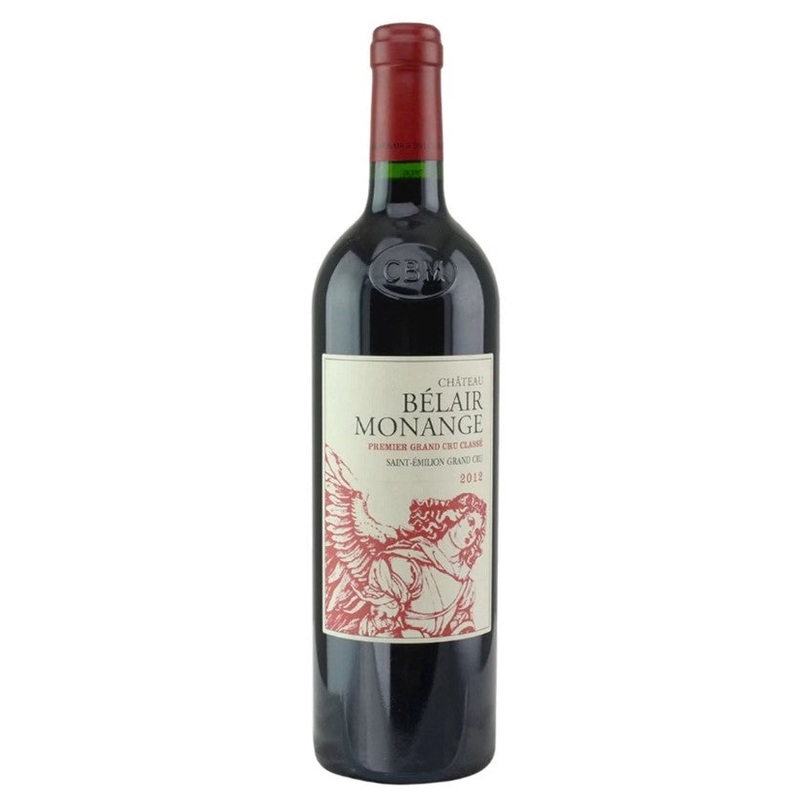Red Wine: 2012 | Chteau Blair-Monange | Saint-Emilion
Very charming, pure and supple in feel, with a slightly open-knit texture allowing the notes of cherry preserves, raspberry coulis and fresh damson plum to play out with an almost breezy air.
Order from the Largest & Most Trusted Premium Spirits Marketplace!
Featured in
- ROLLING STONE
- MEN'S JOURNAL
- US WEEKLY
NOTICE: Many other small liquor store sites may end up cancelling your order due to the high demand, unavailability or inaccurate inventory counts. We have partnerships consisting of a large network of licensed retailers from within the United States, Europe and across the world ensuring orders are fulfilled.
Producer: Chteau Blair-Monange
Ratings: WA | 95 JS | 94
Vintage: 2012
Size: 750ml
ABV: 14.5%
Varietal: Bordeaux Blend Red
Country/Region: France, Saint-Emilion Grand Cru
Very charming, pure and supple in feel, with a slightly open-knit texture allowing the notes of cherry preserves, raspberry coulis and fresh damson plum to play out with an almost breezy air.
Reviews:
- Wine Advocate: With some of the oldest vines in all of Bordeaux, especially one parcel from 1905, Belair Monanges 2012 (14.5% alcohol) is a tribute to this great terroir that was poorly managed and exploited prior to the family of Jean-Pierre Moueix taking over. Now it is Christian Moueix and his son Edouard who manage the property and produce the wine. The 2012 is a beauty, with a deep ruby/purple color, complex notes of minerals, crushed rock, red and black fruits, a medium to full-bodied mouthfeel, great texture, long finish and true ability and character.
- James Suckling: Wonderful wine for the vintage with firm and silky tannins, savory and ripe fruit as well as hints of earth and mushrooms. Chalk and citrus undertones. Full body and a beautiful finish. Addition of Magadeline vineyards shows promise and expanded quality.
Producer Information
Chteau Blair-Monange is a Bordeaux winery and vineyard rated as a Grand Cru Class B in the classification of Saint-milion estates. It makes red wine based on Merlot with a subsidiary component of Cabernet Franc. It was known as Chteau Blair (Dubois-Challon) until the 2008 vintage. The vineyard is located just outside Saint-milion village. Since the 2012 merger with Chtea Magdeleine (see below) it covers 23.5 hectares. 2014 saw the debut of the second wine, Annonce de Blair-Monange. The third wine is Haut Roc Blanquant (Grand Cru). Plantings are 90 percent Merlot and 10 percent Cabernet Franc. The last few vines of Malbec and Petit Verdot were removed by the current owners, tablissements Jean-Pierre Moueix. Vines are on average around 40 years old, with some planted in the 1930s and a few plants dating back as far as the 1900s. A large scale replanting programme is being spread out over the coming decades. In the sections of vineyard on the plateau and top terrace, soils are limestone. Vines at the peak of the plateau (88m/288ft) are considered to enjoy the best terroir. The parcels on the lower slopes have a combination of clay and limestone. The estate was formed in the 14th Century, on land cultivated by the Romans. Wine production didn't begin on the property until the 1700s. In 1850 Beair was rated as the leading wine of Saint-milion in the authoritative Cocks et Ferret guide. It held this status well into the 20th century. It is a close neighbor of the Grand Cru Class A Chteau Ausone and was owned by the same family for much of the 20th Century, even sharing Ausone's cellars. The family name Dubois-Challon, though not an integral part of the property title, was used to distinguish the estate from numerous other Blairs in Bordeaux. It was managed for a time by Pascal Delbeck, who had been the head winemaker at Ausone but, in 2003, he began selling shares to the Moueix family's ngociant business stablissements Jean-Pierre Moueix. By 2008, the Mouiex family was in complete control and the name was changed to Blair-Monange. Anne-Adle Monange is the mother of Jean-Pierre Moueix, grandmother of Christian, and great-grandmother of Edouard, who now runs the property. In 1931 Adle was the first woman from the family to settle in Saint-milion. In the later 20th century the estate had fallen into a comparitive state of neglect, considering its former reputation. With a new team in charge the wine saw a marked upturn in quality. Vineyard selection was made stricter, yields were lowered and the grapes were picked later.

